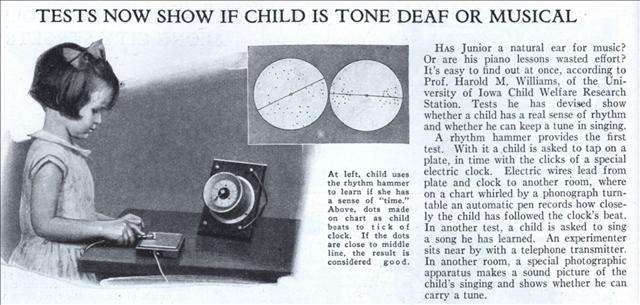Iowa Child Welfare Research Station
| Established | 1917 [1] |
|---|---|
| Research type | Child development, Developmental psychology, Pediatrics |
| Location | Iowa City, Iowa |
| Affiliations | University of Iowa |
The American Iowa Child Welfare Research Station attached to the University of Iowa conducted pioneering research into child development and child psychology during the 20th century. German-American psychologist Kurt Zadek Lewin worked there and Robert Richardson Sears directed the station for much of the 1940s. Many other eminent psychologists, physiologists, and researchers were associated with the station and its work.
In 1963 the station was renamed the Institute of Child Behavior and Development due to negative association amongst the public with the phrase "Child Welfare".[2] In 1974 the Institute was closed as a research establishment.[3]
The station was founded in 1917. A leader of the Iowa Congress of Mothers named Cora Bussey Hillis arranged for the station to be sited at the University of Iowa and procured funding from the state legislature and the Women's Christian Temperance Union.[1] With the exception of a stint of military service during World War I Dr. Bird T. Baldwin served as the first director of the station until his death on May 13, 1928.[2]
In 1922 the station listed these employees:[4]
- Director Baldwin
- Paid, full time—4 nurses, 1 social worker, 3 clerical or other helpers.
- Paid, part time—1 physician, 1 nurse, 1 social worker, 3 clerical or other helpers.
- Volunteer, part time—4 physicians.
Iowa Statute establishing the station
The following law was authored by Carl Emil Seashore, then the head of the psychology department at the University of Iowa:[5]
Section 1. That the state board of education is hereby authorized to establish and maintain at Iowa City as an integral part of the State University, the Iowa Child Welfare Research Station, having as its objects the investigation of the best scientific methods of conserving and developing the normal child, the dissemination of the information acquired by such investigation, and the training of students for work in such fields.
Section 2. That the management and control of such station shall be vested in a director appointed by the said board of education, and an advisory board of seven members to be appointed by the president of the university from the faculty of the graduate college of said university.
Section 3. That there is hereby appropriated out of the money in the state treasury not otherwise appropriated, the sum of twenty-five thousand dollars annually hereafter, for the maintenance of such a station and the furtherance of the objects, to be expended under the direction of said board of education.-- Child-placing in Families[5]
Research

References
- 1 2 Lagemann, Ellen Condliffe (2000), An Elusive Science : The Troubling History Of Education Research, Chicago: University of Chicago Press, p. 134, ISBN 978-0-226-46773-3, OCLC 43095768
- 1 2 Cantor, Joan H. (1991), Psychology At Iowa: Centennial Essays, Hillsdale, New Jersey: L. Erlbaum Associates, p. 42, ISBN 978-0-8058-0761-5, OCLC 23144652
- ↑ Cravens, Hamilton Cravens (1993), Before Head Start: The Iowa Station and America's Children, Chapel Hill, North Carolina: University of North Carolina Press, p. 250, ISBN 978-0-8078-2092-6, OCLC 27265602
- ↑ McKay, Florence Lucinda; Griffith, Alice Eleanor; United States Children's Bureau (1922), Directory of Local Child-Health Agencies in the United States: Bureau Publication № 108, 1922, Washington, D.C.: G. P. O., p. 105, OCLC 13983638 LCCN 22026916
- 1 2 Slingerland, William Henry (1919), Child-placing in Families, New York: Russell Sage Foundation, p. 156, ISBN 0-405-05982-5, OCLC 2947627
External links
- Pictures from the Iowa Child Welfare Research Station in the Iowa Digital Library, University of Iowa Libraries
- Iowa Child Welfare Research Station at University of Iowa Hospitals and Clinics, archived at WebCite at https://www.webcitation.org/5dWWmr0Td?url=http://www.uihealthcare.com/depts/medmuseum/galleryexhibits/womeninhealth/icwrs/anthro.html
- "Forces Behind Food Habits and Methods of Change" by Kurt Zadek Lewin, an account of research performed at the Station. From the book The Problem of Changing Food Habits Report of the Committee on Food Habits 1941-1943.
- Publications of the Station at the Internet Archive